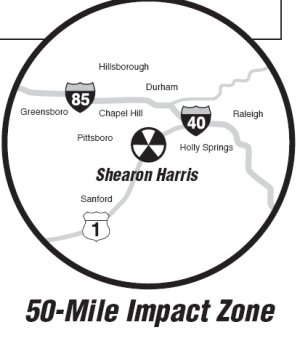If you would like to see our Town use technology to more effectively address social issues, improve operational efficiencies and drive the cost of doing government business down, then make a date to attend the rescheduled Public Forum on Information Technology 7-9pm Mar. 21st, 2007.
The event will be held in the Conference Room of the Chapel Hill Public Library, 100 Library Drive, Chapel Hill [MAP].
While the invitation by “the Town of Chapel Hill to the public to offer comments and suggestions on how it can use information technology to provide more effective and efficient services” is encouraging, given the consultant-oriented agenda
The purpose of the focus group is to provide citizens an opportunity to comment on the components of an information technology environment that would assist Town government operations to provide for the effective and efficient delivery of services to the community. Receiving public input is a part of the process of developing a needs assessment, which is being developed by RHJ Associates Inc. under contract with the Town.
I’m a little concerned that this is more about checking off the “public participation” requirement than soliciting real input.
Council approved the RHJ proposal for a needs assessment [PDF] Nov. 6th, 2006.
Who is RHJ Associates, Inc.?
RHJ Associates, Inc. (RHJA), a Delaware corporation, was established in March, 2000 as a follow-on to the discontinued public sector business unit of The Network Address, Inc. (NAI), Annapolis, Maryland to continue serving the local government community. RHJA focuses on information technology issues confronting municipal governments, is managed by Robert (“Jakeâ€) Jacobstein, formerly Vice President of Client Services of NAI’s public sector business unit, and includes other experts in fields of technology relevant to accomplish day-to-day municipal operating objectives. Upon formation of the company, RHJA expanded its services by teaming with seasoned consultants who possess depth and breadth in virtually all areas of applying technology to government operations. RHJ associates have a minimum of ten years working experience serving the local government sector. RHJA consultants offer a holistic set of services in addressing municipal technology needs. These services include strategic planning, needs assessment, telecommunication planning and design, including voice, data, video and multi-media, organizational development, project management, enterprise resource planning, vocational systems acquisition, and institutional network specification and development,. Collectively, RHJ associates have served hundreds of public entities by assisting them with their information technology challenges.
Sounds good doesn’t it? Strange thing – the only website I’ve found for them (http://rhjassociates.com/) list their address as:
1124 Ragsdale Ct.
New Port Richey, FL 34654
(301) 332-2300
(646) 225-7777 (fax)
Jake’s Email
The site is rather, ummm, elegant in its simplicity.
If there’s another site, I haven’t stumbled on it yet. This kind of appears to be a one man operation run by “Jake”. The curricula vitae of his staff, at least the staff he had in 2004 looks impressive but his proposal to Council was silent on his 2007 assistants (if any).
How did RHJ Associates get involved? Town Manager Roger Stancil.
Town Manager Roger Stancil had recommended a contract with RHJ Associates Inc., a Maryland-based municipal technology planning company which he had hired in Fayetteville, where he worked as city manager before coming to Chapel Hill in September. The company is managed by Jake Jacobstein, a former executive with The Network Address Inc.
N&O’s Jesse James DeConto, Oct. 26th, 2006
Hey, working with someone you’ve worked with before and trust is a smart idea. The no-bid $37,000 contract – not so smart.
Especially for a guy that seems not to be broadly experienced in building social networks or business systems but, instead, has focused on optimizing telecommunications.
At least that’s what he did for Fayetteville’s Public Works Commission (their hometown power company) Oct. 11th, 2006 .
Consideration of Purchase of New Telephone Switch and Related Components
Presented by: James Rose, Chief Administrative Officer Jake Jacobstein, RHJ Associates
Recommendation: Award contract to Embarq (formerly Sprint) [OUCH!]
Same for Cumberland County, Jan. 25th, 2006.
The committee discussed at length the pros and cons for the phone system being voice over IP or digital. RHJ Associates, Jake Jacobstein will attend a meeting with the Partnership staff to provide an initial consultation for what is best for the Partnership and OFRC tenants.
Or Colonial Heights, Virginia Oct. 26th, 2006
The objective is to replace the entire telephone system with a new system that increases the effectiveness of 911 PSAP systems users and the public safety service level to the citizens. The City Emergency Communications Center desires to acquire a system with a proven technical and functional design and preference will be given to Proposers that have currently installed systems that closely approximate or satisfy the City Emergency Communications Center’s requirements in the major functional areas.
Hey, nothing wrong with telecommunications! I worked many years for Nortel – even programmed telephone gear. Heck, I think VOIP (voice over Internet) is the bee’s knees.
And don’t get me started on municipal networking and WiFi.
Just because it appears Jake is top heavy in telecomm , there is no reason he couldn’t be fluent in the latest tech trends. I went on to help bootstrap a couple .COMs to multi-million dollar status as a CIO/CTO. I’m at ease with the latest-n-greatest the computer field offers.
No reason Jake couldn’t have tread the same path.
Still, it is curious, at least to this former member of the unreconstituted Technology Board (you remember how Mayor Foy peremptorily dissolved those apparently nettlesome citizen groups don’t you?), that a needs assessment tapping the wisdom of our computer-oriented citizenry isn’t being performed interactively on the ‘net.
Where is the online forum?
Geez, one of the great advantages of online technology is to open up the discussion – to create a long tail of collaborative content to help fuel innovation.
A few missteps here but Mar. 21st will prove RHJ Associates mettle. 7-9pm. The Library. Bring your tech wishlist.


